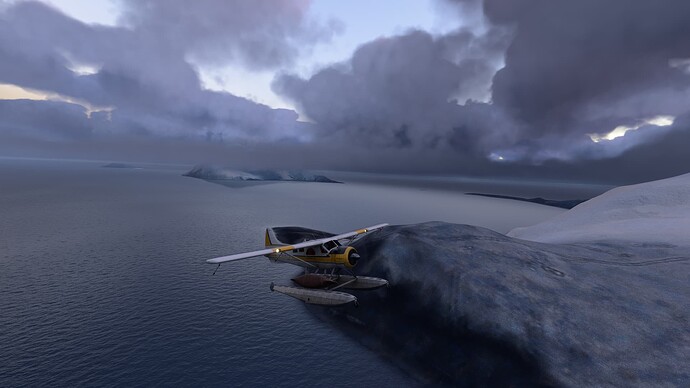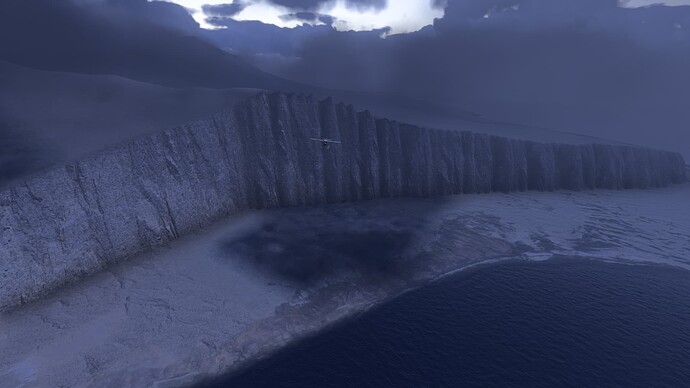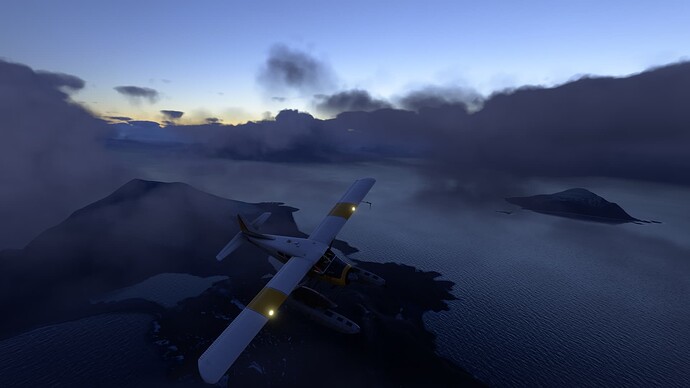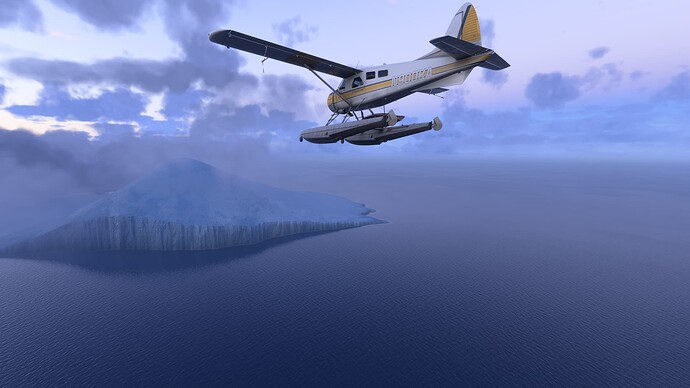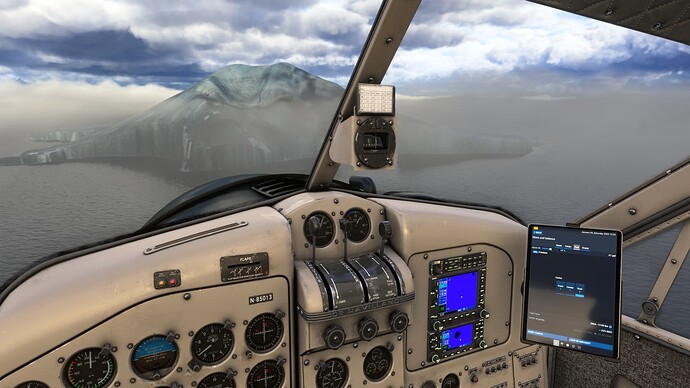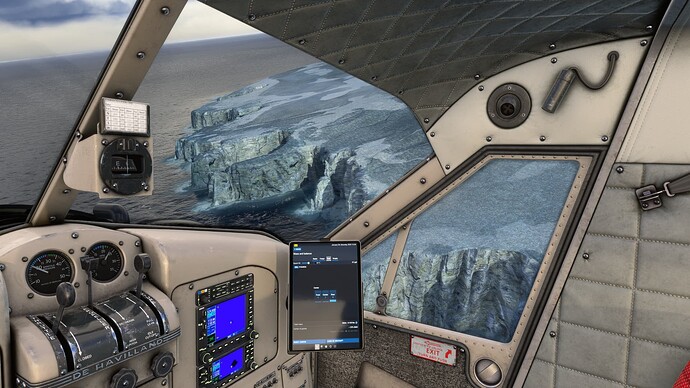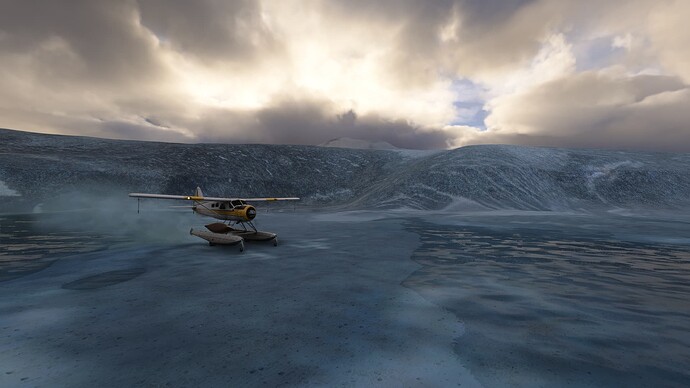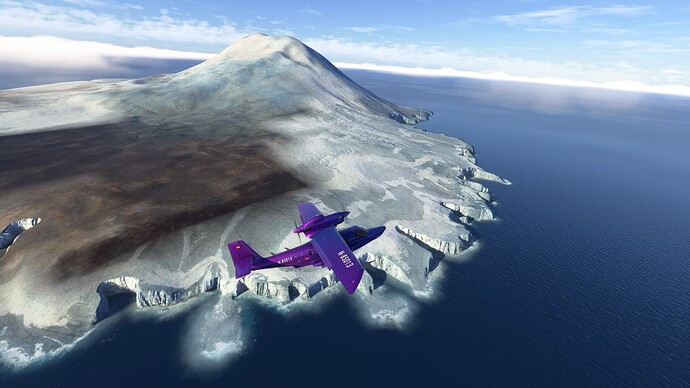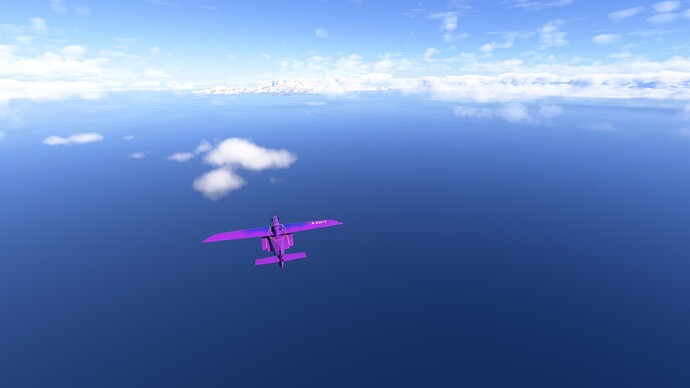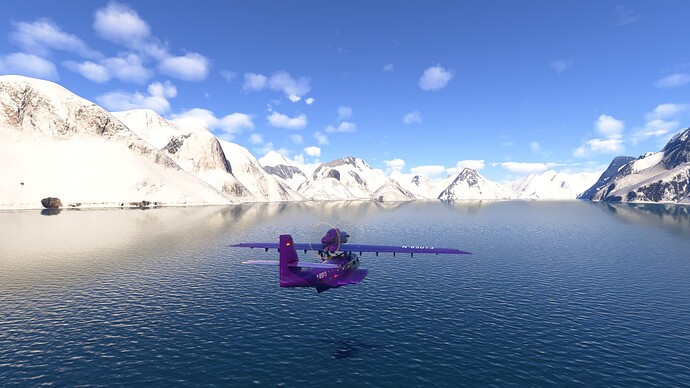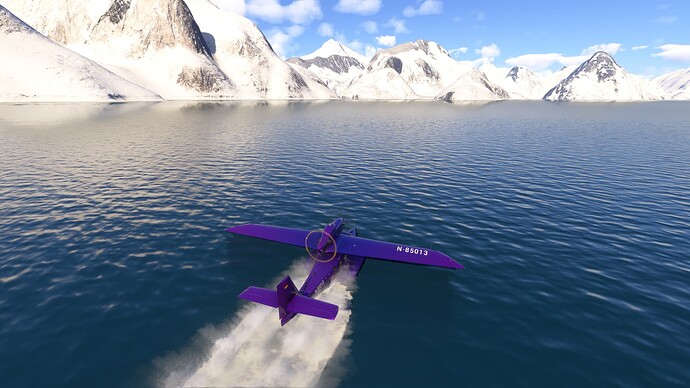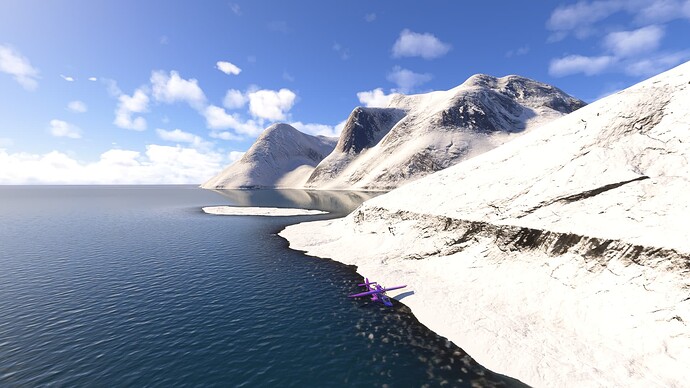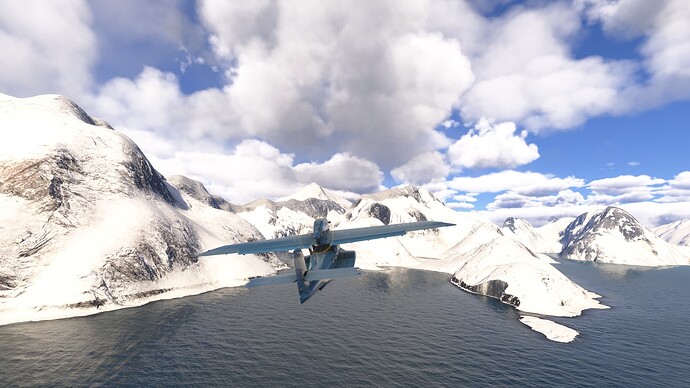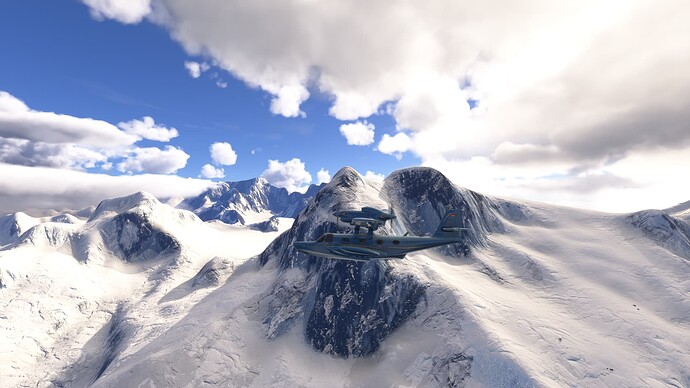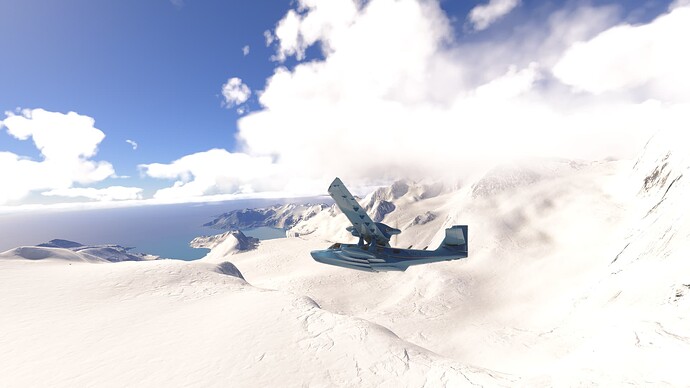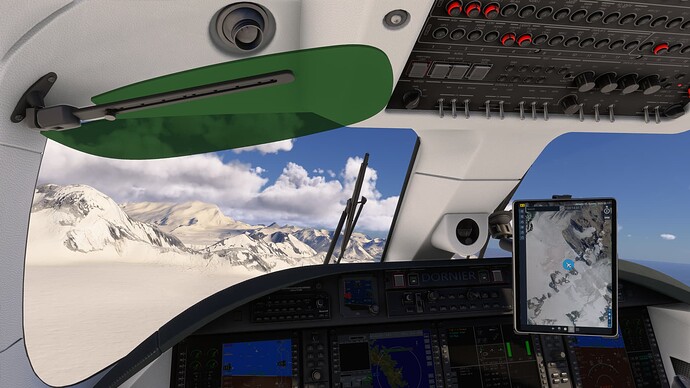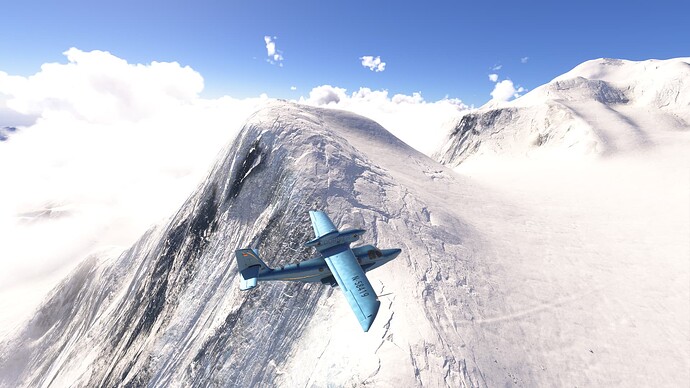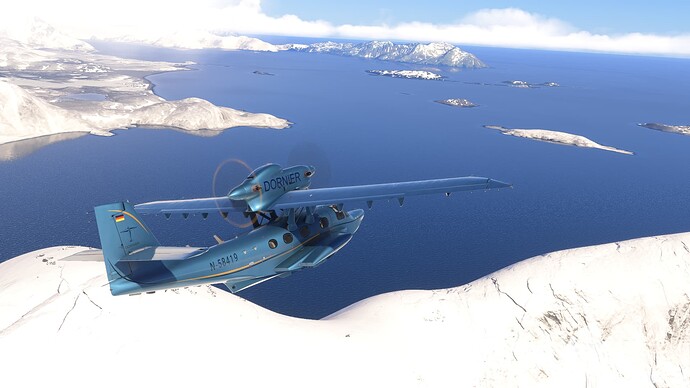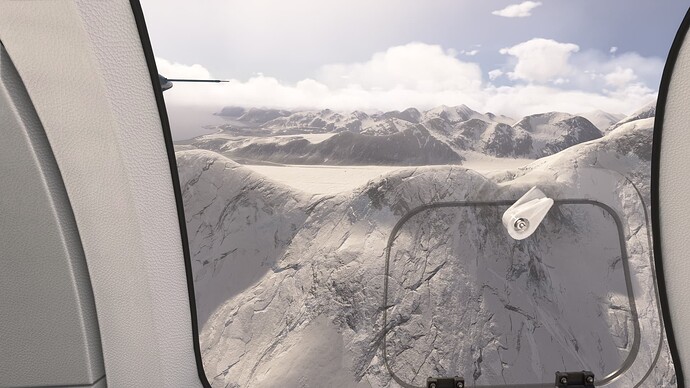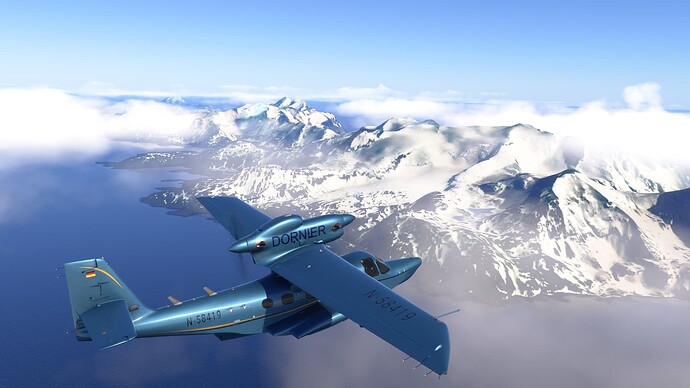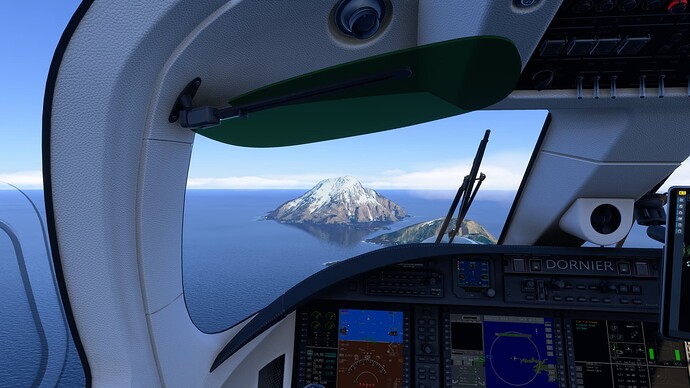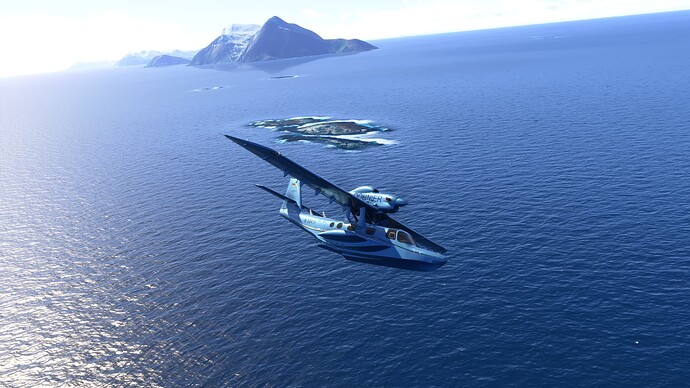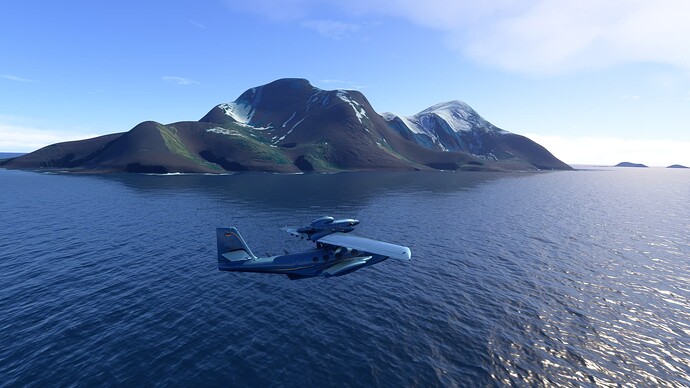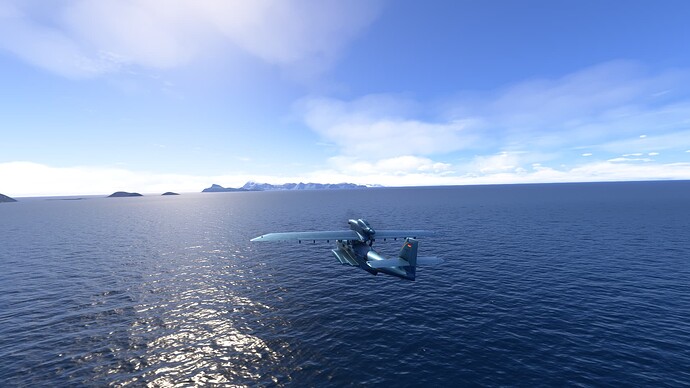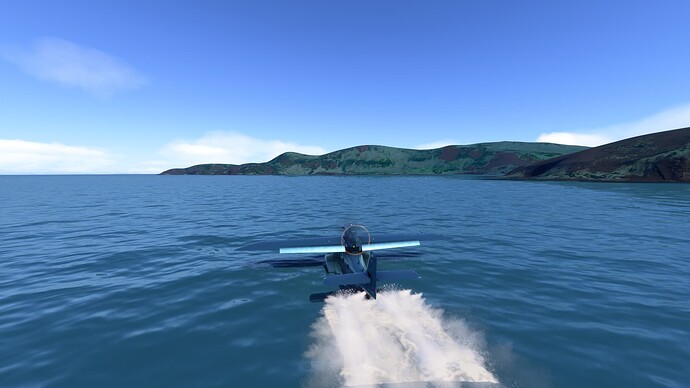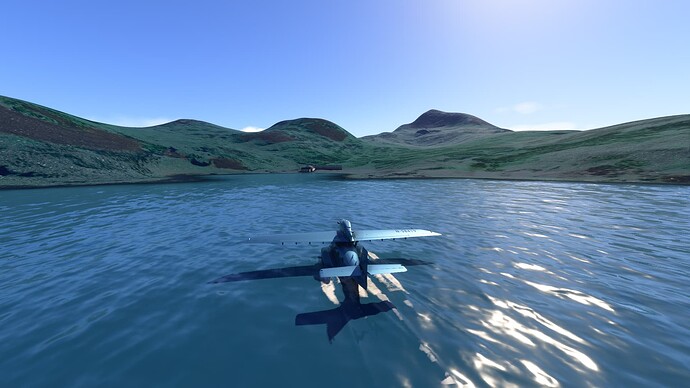Part 1 - South Sandwich Islands
Located at the bottom of the world, the South Georgia and the South Sandwich Islands are rarely visited by anyone. On this journey, we will travel from south to north, starting at Thule Island. Thule Island, like all the others, was formed by volcanic action, so is mostly rock & ice.
Since there are no airports and virtually no flat spot able to take off from, I chose the DeHavilland Beaver as my aircraft and spawned cold-n-dark just off Beach Point at the north-east corner of the Island. The South Sandwich Islands can all be visited without refueling provided all three tanks are filled to capacity at the start of the flight, and you maintain good fuel management.
Here we are, just after take off. The perceptive will notice that in my haste to depart, I failed to remove the covering over the pitot tube. Hmm. Guess I’ll be estimating my airspeed on this trip!
Cook Island, the central and largest island of the Southern Thule island group, is named for Captain James Cook:
A quick fly-pass in the gap between Mount Harmer & Mount Holdgate, and we continue past Resolution Point and over Bellingshausen Island to the cliffs of Bristol Island:
The next island in the chain is Montagu, with the imposing Mount Oceanite:
Saunders Island is composed of the active stratovolcano Mount Michael, which has a lava lake in its summit and there is widespread evidence of recent eruptions across the island:
Further north, Candlemas Island features the heavily glaciated volcanoes Mount Andromeda and Mount Perseus. Just offshore is it’s near neighbor Vindication Island:
The next three islands in the chain form the Traversay Islands.
First is Visokoi, which consists of one major volcano, Mount Hodson:
Leskov Island (not pictured) is very small - just a semicircular 190 metres (620 ft) high eroded volcano with a large bay on its eastern side.
The final island, and our destination for this leg of our journey, is Zavodavski Island. The largest penguin colony on Earth with over a million breeding pairs is situated on Zavodovski.
The island is one of the most active volcanoes in the South Sandwich Islands. The discoverers had fun naming the various features of the Island: Its highest point is Mount Asphyxia, and Stench, Acrid, Reek, Pungent, Fume and Noxious Points encircle the island.
Mount Asphyxia. Note that I only have 4 gallons of useable fuel remaining!:
Most of the shore is lined with cliffs:
But there is a small area north of Point Pungent where one can land and beach the aircraft:
This trip can be completed in about 2 hours. On arrival, I had 3 gallons of usable fuel remaining in the rear tank.
This would be a good place to refuel for the next part of our journey to the island of South Georgia.
If you forgot to have extra fuel delivered to the island, I’m afraid you’ll be stranded until some can be delivered by boat. Luckily, you’ll not starve to death, what with all those penguins about! ![]()
